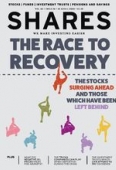Archived article
Please note that tax, investment, pension and ISA rules can change and the information and any views contained in this article may now be inaccurate.
How does the taxman top up my pension contributions?

I have been told the annual allowance for a SIPP is £40,000 (£32,000 personal contributions + £8,000 tax relief) but how do I get the £8,000 from the taxman? And can I backdate for the previous three years and put in £40,000 x three in the current tax year, as well as my £40,000 existing allowance?
Tikam
Tom Selby, AJ Bell Senior Analyst says:
Most people can pay up to £40,000 a year into a SIPP (the ‘annual allowance’), namely £32,000 of their own contributions and £8,000 in basic-rate tax relief. If you contribute to a SIPP, basic-rate tax relief will be added automatically.
If you’re a higher or additional-rate taxpayer, you can claim extra tax relief via your tax return.
You need to be aware of exceptions to the £40,000 annual allowance. If you have flexibly accessed taxable income from your pension from age 55, for example by taking flexi-access drawdown, you will trigger the money purchase annual allowance (MPAA).
The MPAA is set at £4,000, meaning you can pay in a maximum of £3,200 into a SIPP and your provider would top it up with basic-rate tax relief of £800. Note the MPAA will not be activated if you take only your 25% tax-free cash or if you buy an annuity.
Very high earners may also have a lower annual allowance as a result of the ‘taper’. The taper kicks in once you have ‘threshold income’ above £200,000 and ‘adjusted income’ above £240,000. Where both these income measures are breached, your annual allowance will be reduced by £1 for every £2 of adjusted income above £240,000, to a minimum of £4,000.
You can read more about the annual allowance taper here.
In addition, the amount you can save in a pension each year is restricted to 100% of your relevant UK earnings. For example, someone with total employment income of £30,000 could only save £30,000 in a pension for that tax year.
Finally, there is a feature called ‘carry forward’ which can allow you to utilise unused allowances from the three previous tax years in the current tax year. This means you could pay up to £160,000 into a SIPP in the current tax year (£40,000 in the current year plus three x £40,000 annual allowances from previous years).
You must have been a member of a pension scheme previously to take advantage of carry forward and can still only pay up to 100% of your relevant UK earnings into a pension in any given tax year.
Those affected by the taper in any of the three previous tax years can only carry forward up to the tapered amount from those years, while those who have triggered the MPAA lose the ability to carry forward unused allowances.
You can read more about carry forward here.
DO YOU HAVE A QUESTION ON RETIREMENT ISSUES?
Send an email to editorial@sharesmagazine.co.uk with the words ‘Retirement question’ in the subject line. We’ll do our best to respond in a future edition of Shares.
Please note, we only provide guidance and we do not provide financial advice. If you’re unsure please consult a suitably qualified financial adviser. We cannot comment on individual investment portfolios.
Important information:
These articles are provided by Shares magazine which is published by AJ Bell Media, a part of AJ Bell. Shares is not written by AJ Bell.
Shares is provided for your general information and use and is not a personal recommendation to invest. It is not intended to be relied upon by you in making or not making any investment decisions. The investments referred to in these articles will not be suitable for all investors. If in doubt please seek appropriate independent financial advice.
Investors acting on the information in these articles do so at their own risk and AJ Bell Media and its staff do not accept liability for losses suffered by investors as a result of their investment decisions.

 magazine
magazine








